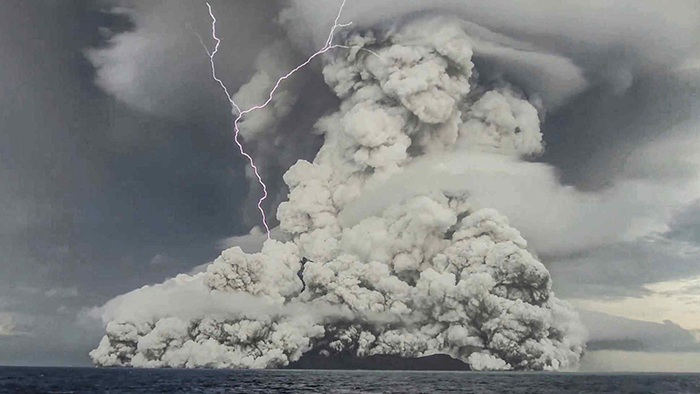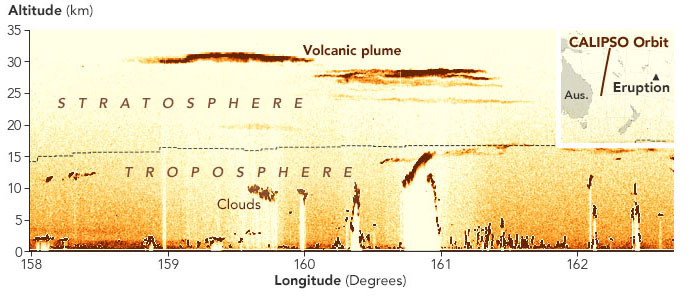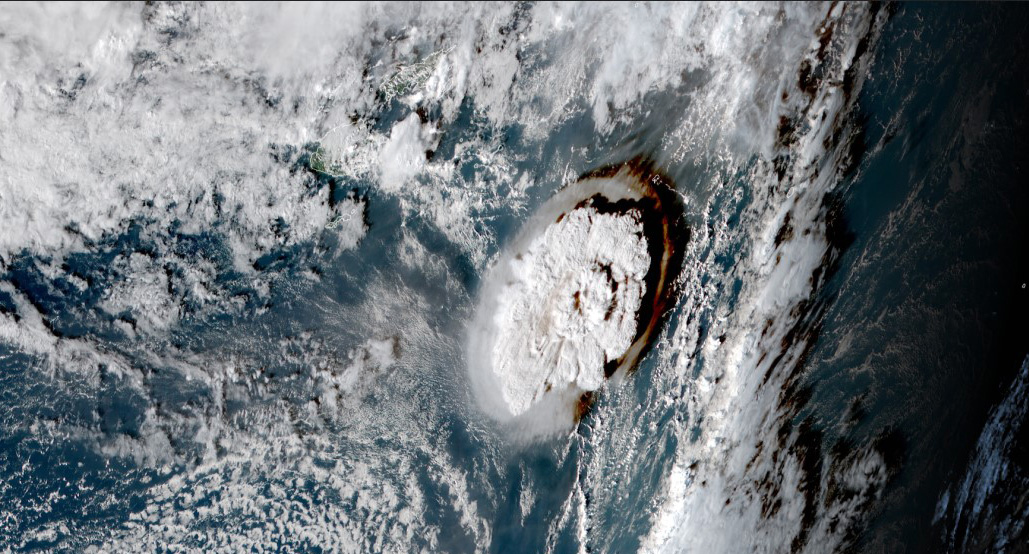2022 News & Events
Eruption provides rare opportunity to study volcanic gas and ash injected into the stratosphere
20 January 2022


Scientists are traveling to La Réunion to intercept the plume from the Tonga volcano eruption.
On January 15, the Hunga Tonga - Hunga Ha'apai volcano north of Tongatapu in the south west Pacific erupted with ash and sulfur dioxide gas reaching into the stratosphere to altitudes up to or higher than 30 km. It produced excessive lightning and triggered a tsunami, and waves were reported circling the earth multiple times. It is likely the largest volcanic eruption since that of Mount Pinatubo in 1991. Although the radiative impact of this eruption on surface temperature is unlikely to be significant, estimates are that it injected 0.4 teragrams of sulfur dioxide into the stratosphere. This is approximately 2% of the amount that Mount Pinatubo injected into the stratosphere.
This eruption is providing the opportunity to study the microphysical processes that occur when sulfur dioxide gas is emitted into the stratosphere and will help to improve the accuracy of atmospheric models. To take advantage of this rare opportunity, scientists from CIRES / NOAA CSL and the University of Houston are joining with colleagues on La Réunion, an island in the Indian Ocean, to make in situ measurements deployed by balloons that can rise to 30 km.
Observations will be made approximately a week after the eruption, which is the time it takes for the sulfur plume to travel westward ~8000 miles from the volcano location to La Réunion, where balloon launches will occur at the high altitude Maïdo Atmospheric Observatory. The effort required to make these measurements has been substantial and builds upon past scientific relationships with scientists on La Réunion, who themselves were previous NOAA / CIRES employees.

In the week while the plume was moving 8000 miles to La Réunion from the east, personnel and balloon instruments were made flight ready and transported approximately 11,000 miles to the observatory. Additionally, new collaborations were quickly built, bringing in scientists from the University of Houston and St. Edwards University who have developed a sulfur dioxide sonde. Scientists on La Réunion are providing ozone and water vapor measurements to complete the characterization of the volcanic plume and its impacts on stratospheric composition. Finally, connections were made with forecasting teams in China, the UK, NASA and NCAR to determine when it will be ideal to launch the measurement payloads.
In all, this was a herculean effort over a period of less than a week that has potential for a significant increase in our understanding of the evolution of the volcanic contribution to stratospheric aerosols. This will be the quickest response to volcanic eruption to date, providing the ability to characterize plume evolution during the critical aerosol formation period.